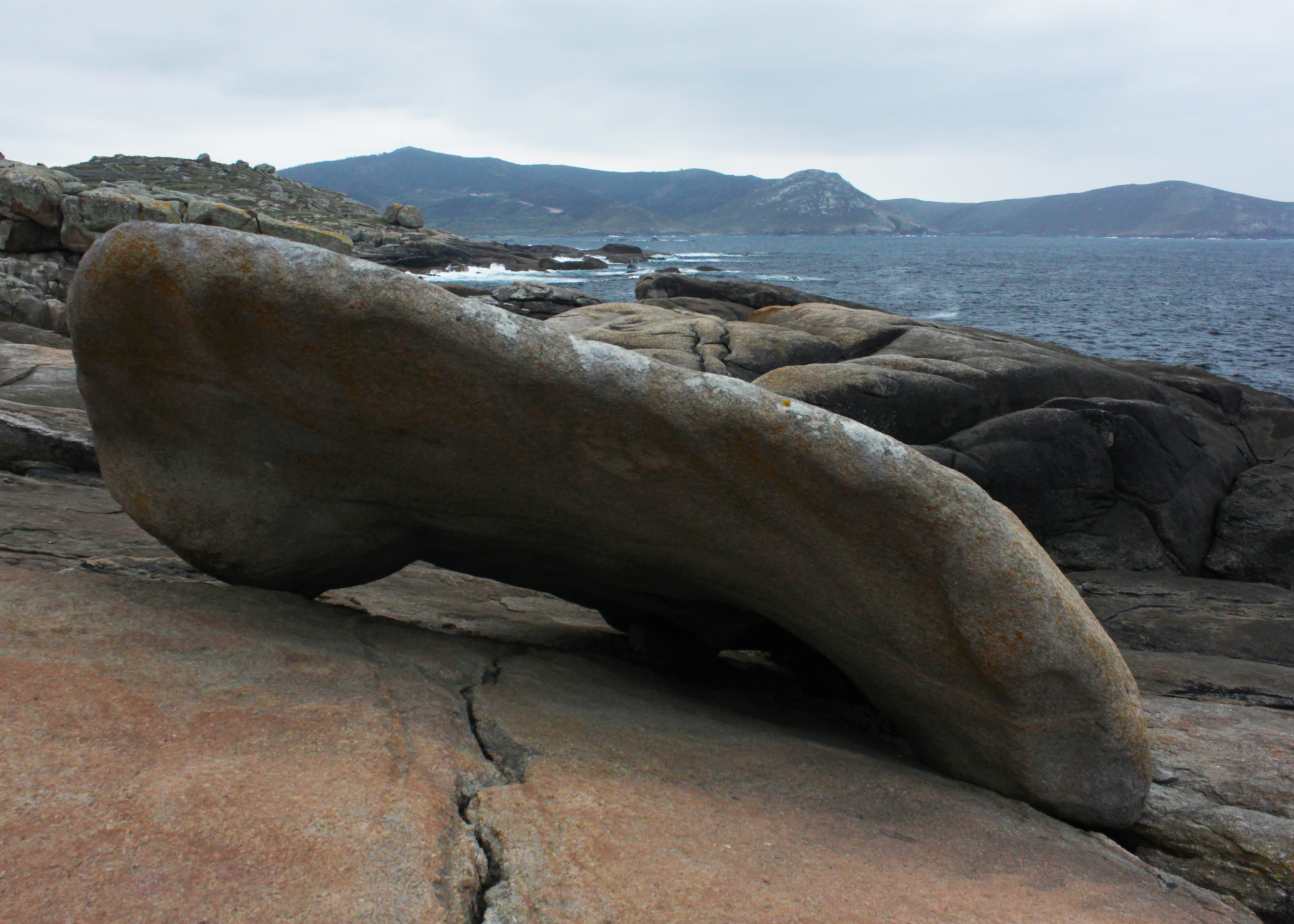 Previous Day |
Olveiroa → Muxía 26.4 km (16.4 mi) |
 Next Day |
¡Viva Muxía, todos!
I’d heard about a second destination on this side of Santiago: Muxía (Moo-shee-a), where legend says Saint James became discouraged and the Virgin Mary appeared to him in a boat made of stone! She told him he’d be better off returning to Jerusalem and preaching there, so he took her advice and returned to the Middle East, where he was promptly beheaded. Thanks for the tip, Mary! Anyway, I heard that the remains of her boat were still on the beach of Muxía! Well, who wouldn’t want to see such a thing? As fortune would have it, I still have a lot of extra time to explore, so vamonos!
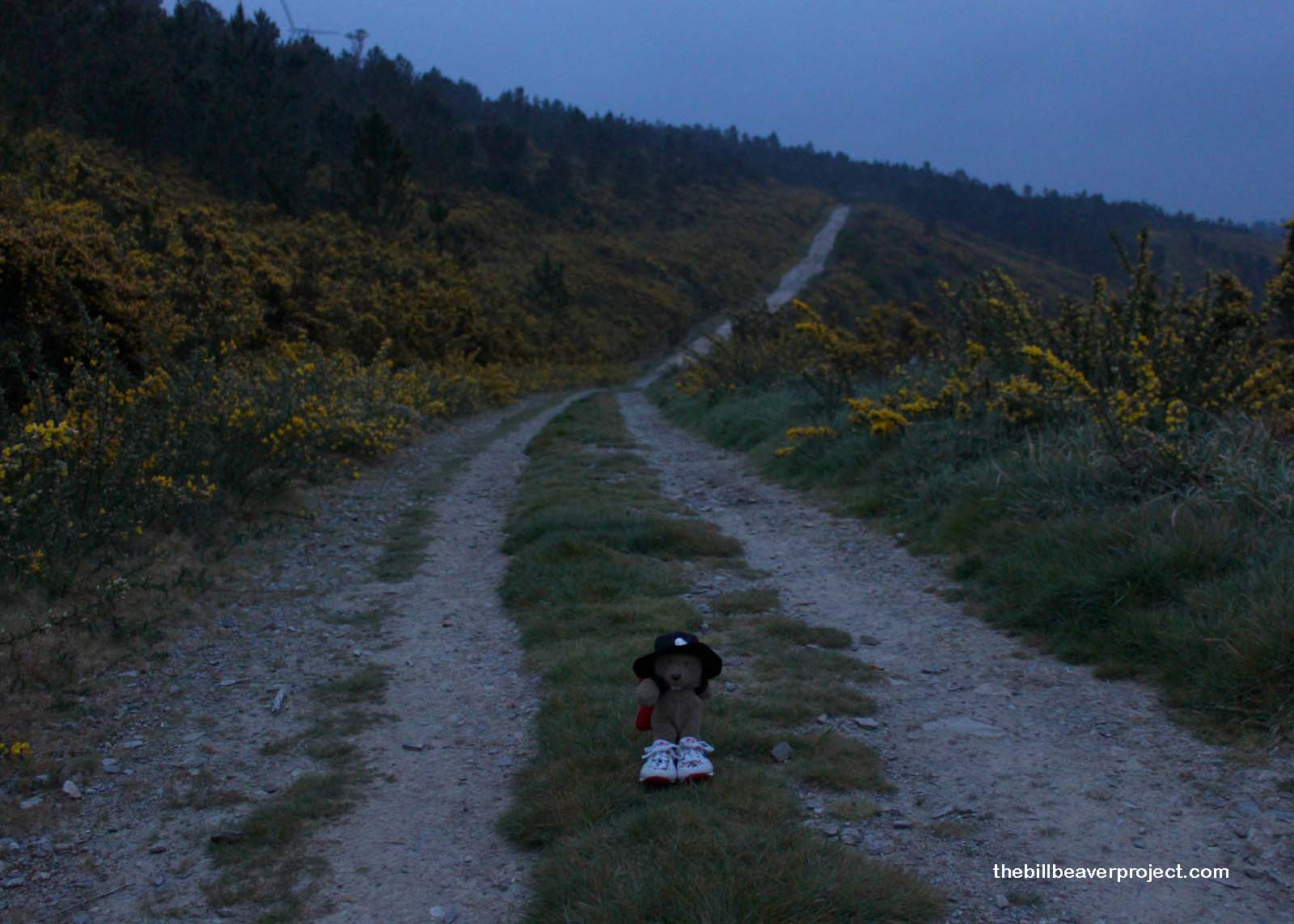 |
This was the most beautiful morning of the Camino! I started before dawn and headed into the mountains, as the stars fell through the clouds and became windmill lights on the peaks, then trickled down to a lake below me and became boat lamps! As the morning brightened, the slopes around me were draped in a golden aulaga blanket! The sky was overcast and the weather cool and misty, which combined with the lights in the distance and the soundtrack of the songbirds to make these misty mountains magical!
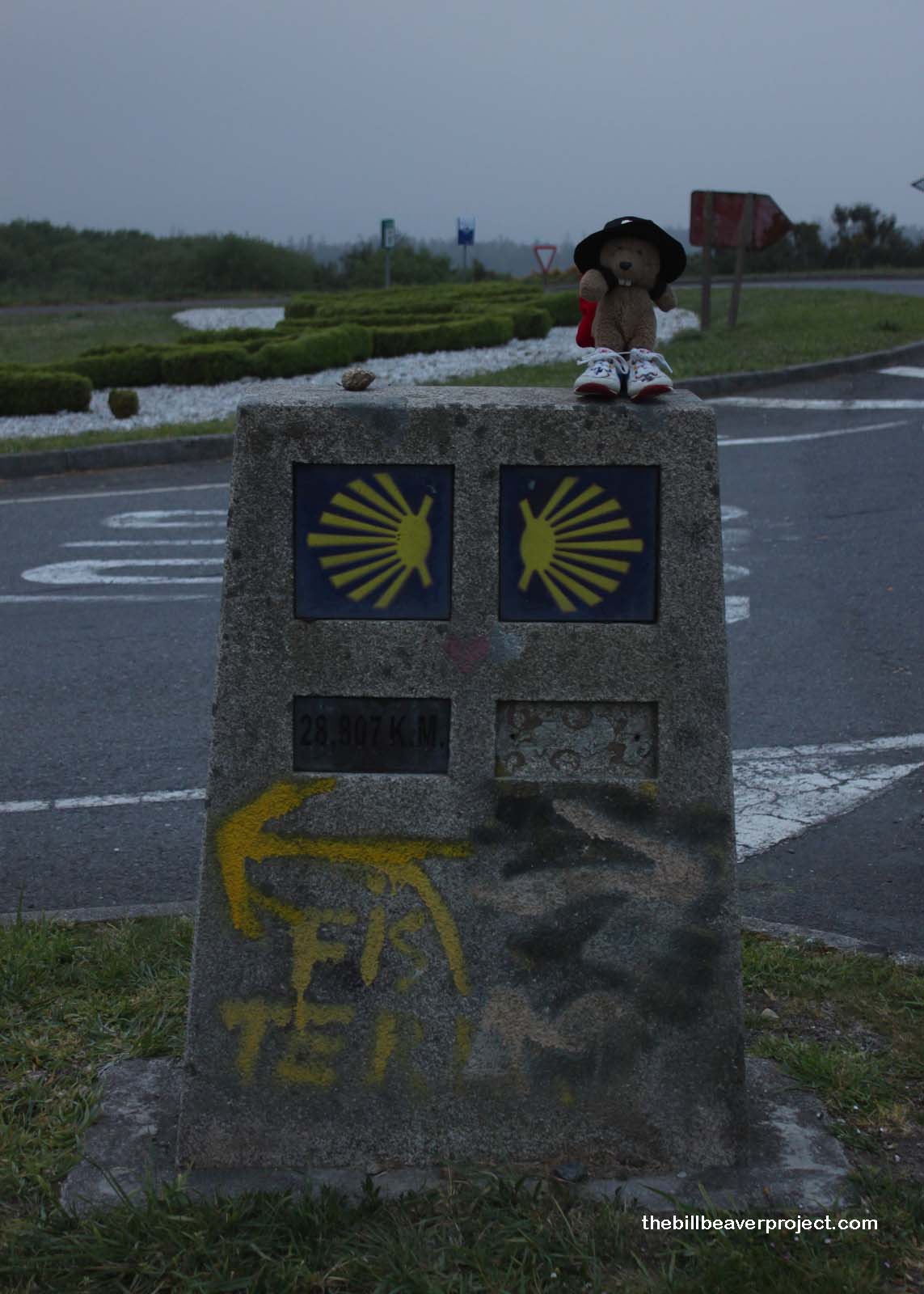 |
After roughly 8K of soaking in this gorgeousness, I arrived at the marker splitting the Camino: Finisterre to the left or Muxía to the right. As if I hadn’t already decided by then, a rather slovenly fellow on his way to Finisterre stopped by and asked me for a cigarette. It was an honest question, but frankly, I was so tired of the Spanish love of cigarettes that I just didn’t want to play Camino leapfrog with him. So, he went on his way, and I went on mine, along the road less traveled. That’s when the most amazing thing happened!
Once I broke off the Camino de Finisterre, I realized that, at this time of year, I probably would not meet another peregrino between here and Muxía! I didn’t see anyone or expect to see anyone. I had to keep up with no one, keep ahead of no one, and pay attention to nothing but the birds and the fresh air tickling my nose! I felt liberated, the way a young beaver is supposed to feel on leaving home for the first time, and I realized that when I left home, I hadn’t felt this way. I was on a mission, and missions are anything but liberating!
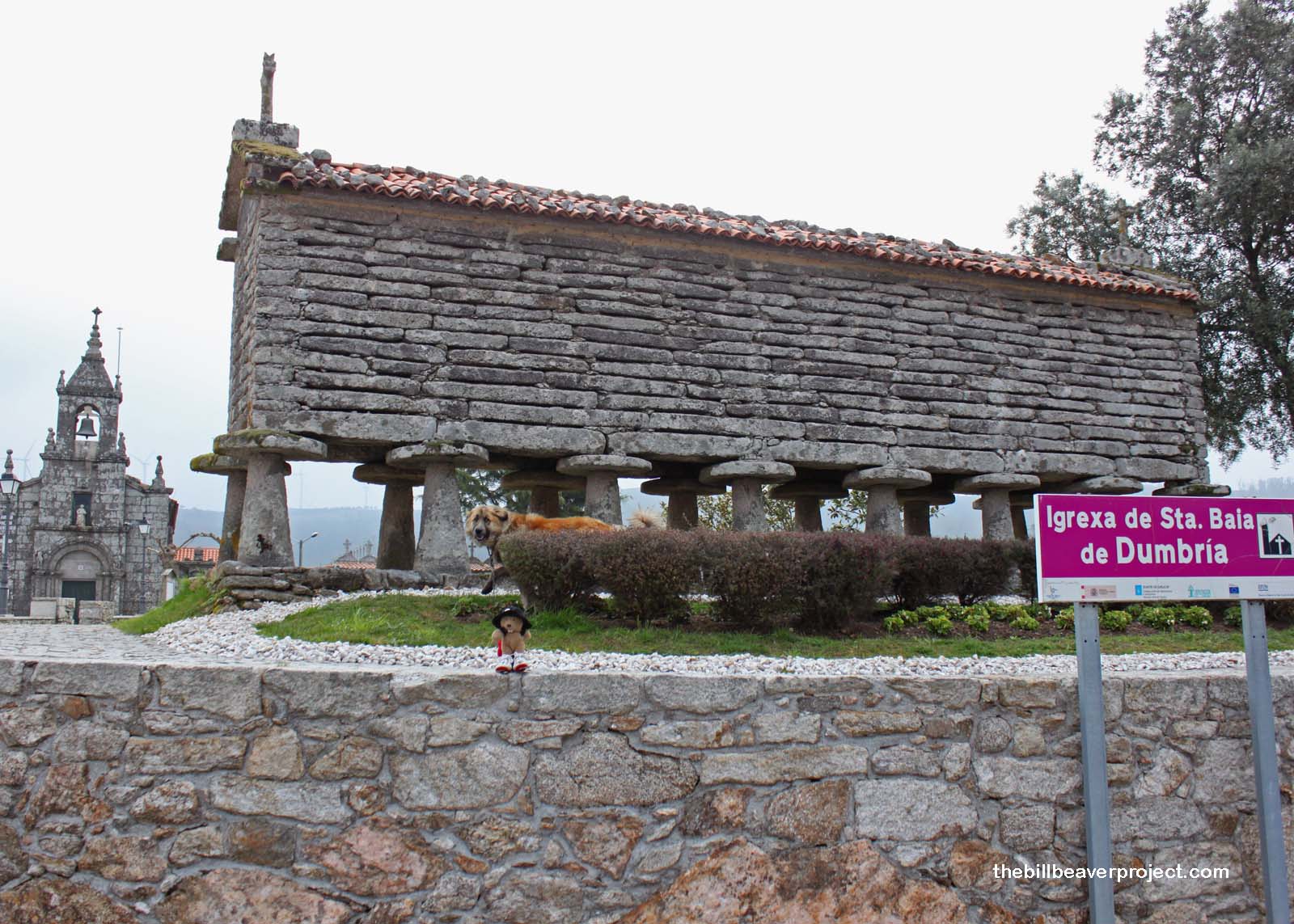 |
This feeling carried me into the town of Dumbría, where, as I took a picture of the local church, I met the scariest dog in the world. After Santiago, the dogs got rowdy. I mean really rowdy. Dogs bark at me all the time back home, and sometimes I bark back, all in good fun! Here, though, the dogs snarl and jump at the fence. I’m not used to snarling dogs. This one didn’t snarl, however. It stared. Big and dirty, it paused to sniff the ground, then looked up at me. It circled me, dragging a broken chain around its neck. Pause, sniff, watch. I had to leave.
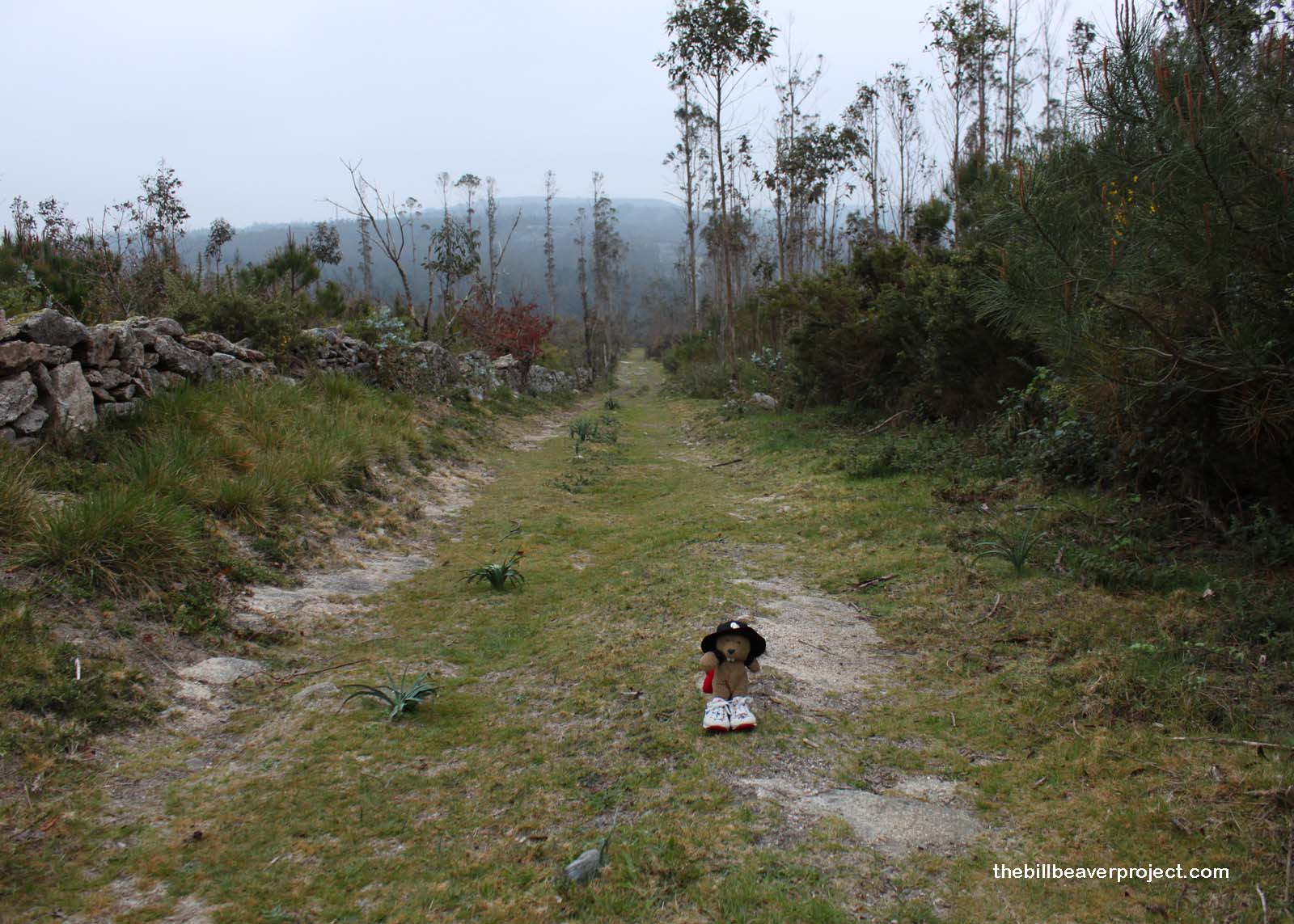 |
Having escaped Dumbría with my life, I left the beaten path in the dust. Literally. Until now, the Camino had been dusty, heavily trodden gravel and dirt, but here, where peregrinos seldom have time to tread, it was covered in the softest grass! There were even some larger plants growing right in the middle of the path! I saw a bunny! I nearly stepped in deer poop instead of cow poop! For the first time in a long while, I actually enjoyed just walking without calculating kilometers or mulling over my estimated time of arrival at the albergue!
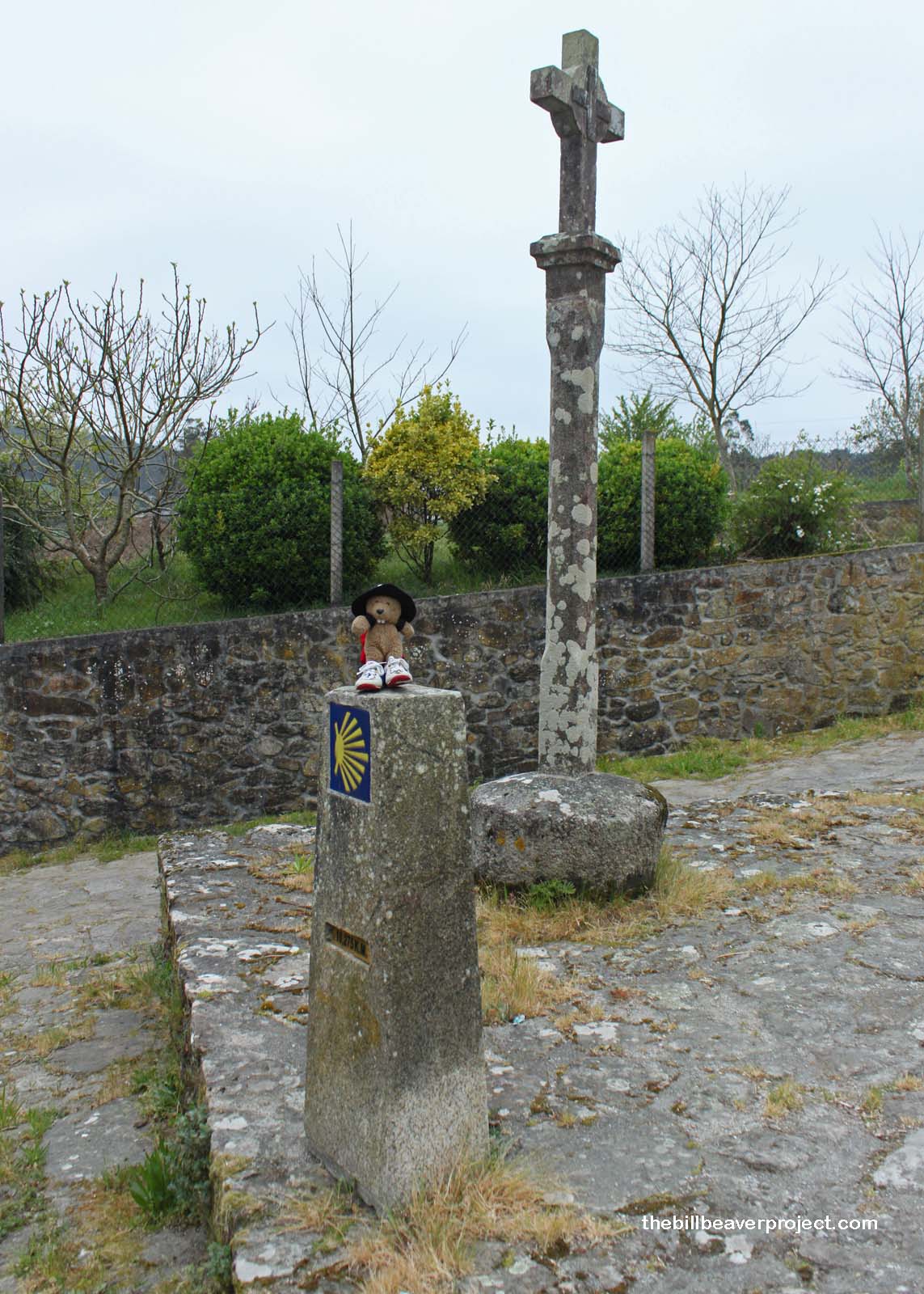 |
The Way traversed hill upon hill upon hill to the point that I was starting to get kind of tuckered out! I stopped for a bocadillo and met a peregrino who had stayed in the albergue back in Negreira. So there was somebody else on this route after all! Badgersniffers! Suddenly, my feeling of freedom went away. I know I’ve been walking in the footsteps of thousands of years’ worth of peregrinos, but this morning, I felt I was walking a route that hadn’t been touched for years to a destination that only the most dedicated and interested peregrinos would care to visit. Now, with a physical peregrino in front of me, I am walking directly in someone else’s footsteps, and somehow, today’s journey feels a little less magical.
That will never do! Maybe he has a super amazing reason for doing the Camino. Maybe he’s the ultimate peregrino, and if I learned his reasons for doing the Camino, I’d feel honored to be walking in his footsteps! Before I could ask, he picked up his backpack and walked out the door!
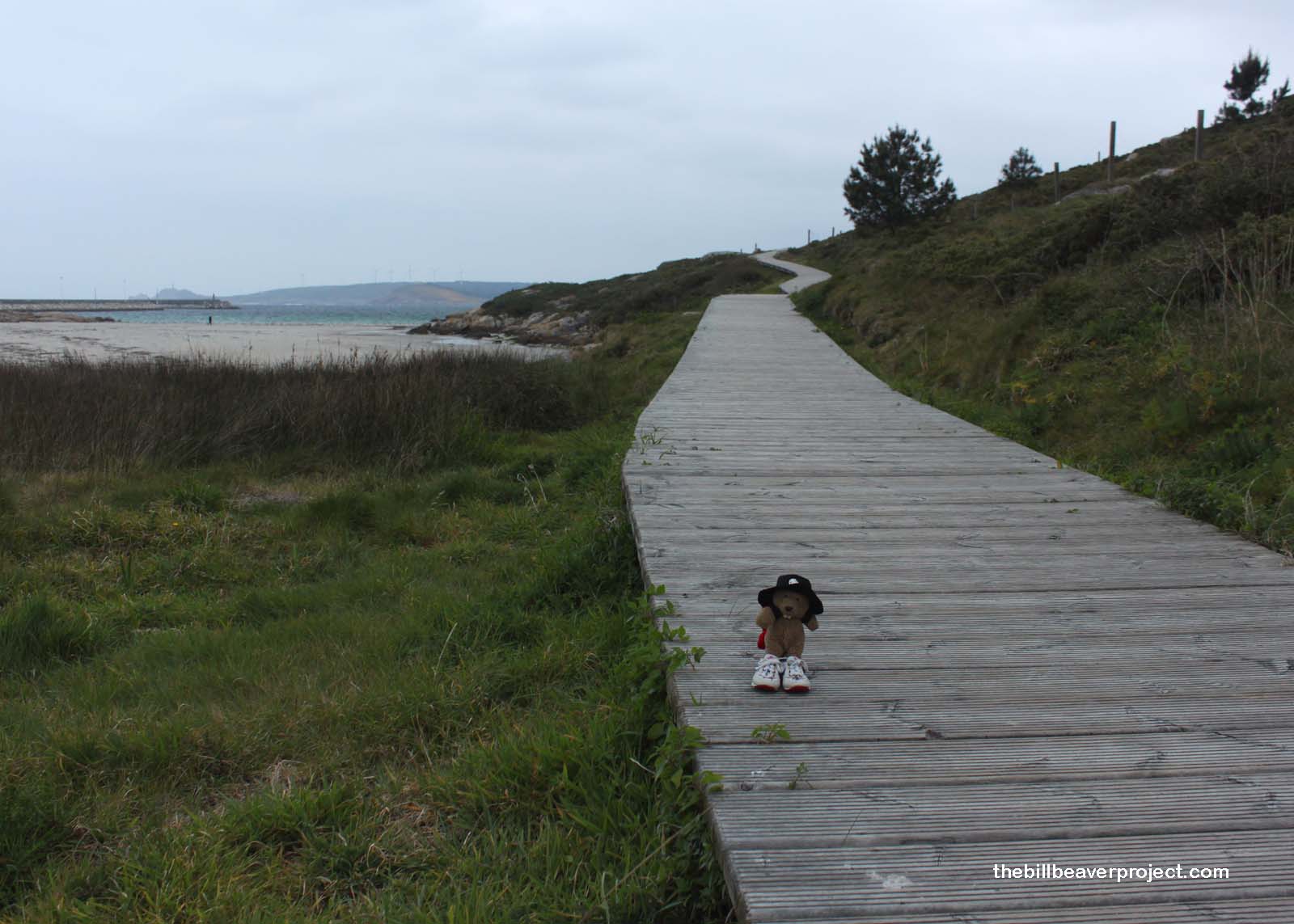 |
After a long walk through the woods, I caught my first sight of the ocean! There’s something about a stormy ocean that I find particularly beautiful, so I picked up the pace all the way down to where the Camino turned to boardwalk. I sure hadn’t expected a boardwalk! The seagulls that had encouraged me sporadically since Santiago were now a mass of white feathers circling over the city, calling “Go! Go! Go!” That drove me right into the wonderful fishing village of Muxía, which some cynics called “touristy,” but I only saw one souvenir shop in the whole town!
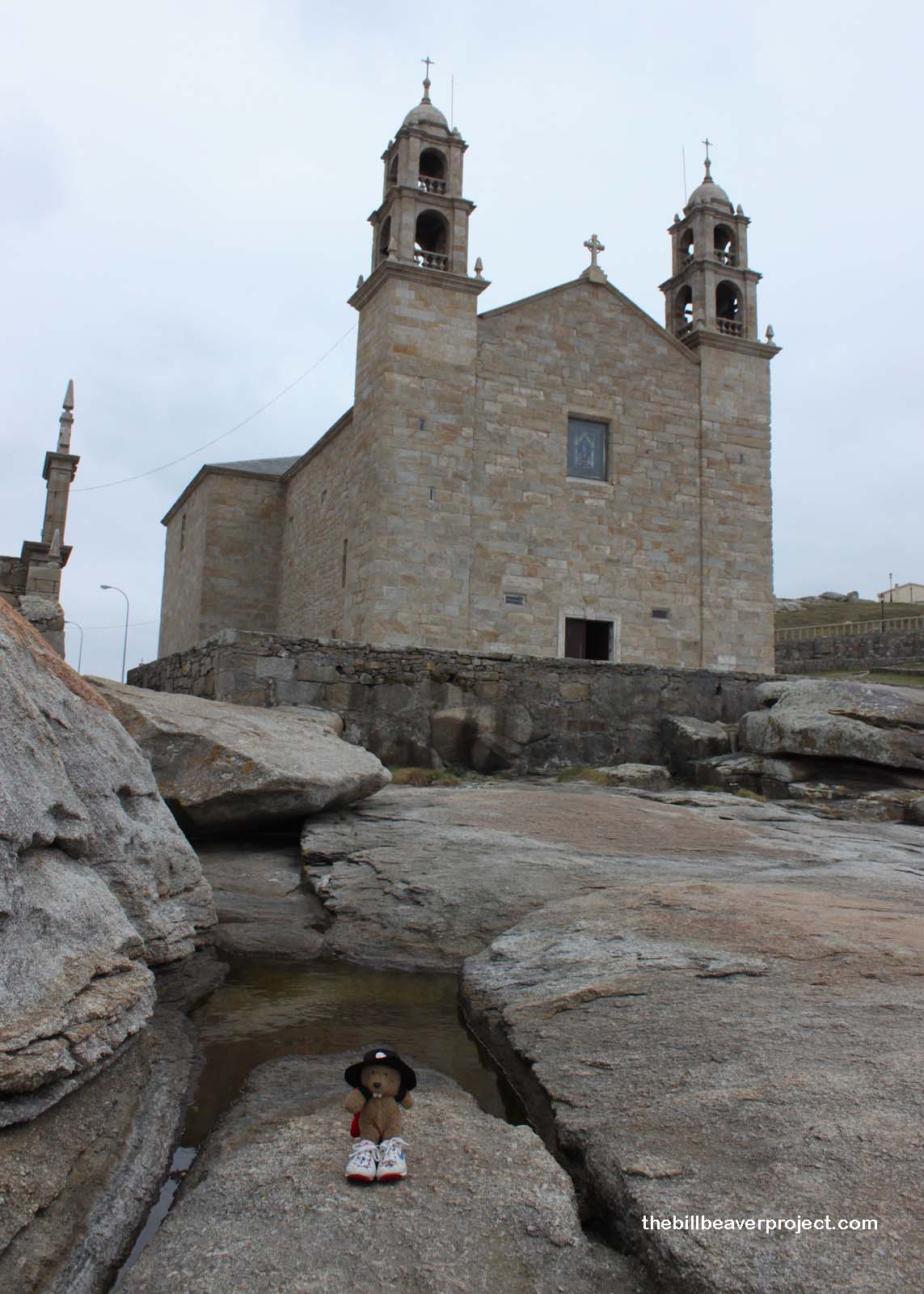 |
The Sanctuary I sought was all the way on the other side of town, over rocky slopes leading to the sea, crisscrossed by the foundations of ancient buildings and the thousand calla lilies that sprout from their centers! I still had plenty of daylight, but my adrenaline sent me sailing all the way to the Sanctuary and the nearby lighthouse without a rest!
Though not officially mentioned until 1544, studies of the deteriorating first chapel of the Sanctuary show that it may have had an earlier incarnation as far back as the 11th or 12th centuries, so it couldn’t have been that separate from the Camino de Santiago (or so “new age”). This place and its balancing rocks have been a center of curiosity for thousands of years, even before the Virgin Mary was born! I’ll get to that in a second, but first, I wanted to delve into the legend of the boat made of stone by finding its parts: hull, rudder, mast, and sail. I have to say, at first sight, they sure did look like parts of a boat:
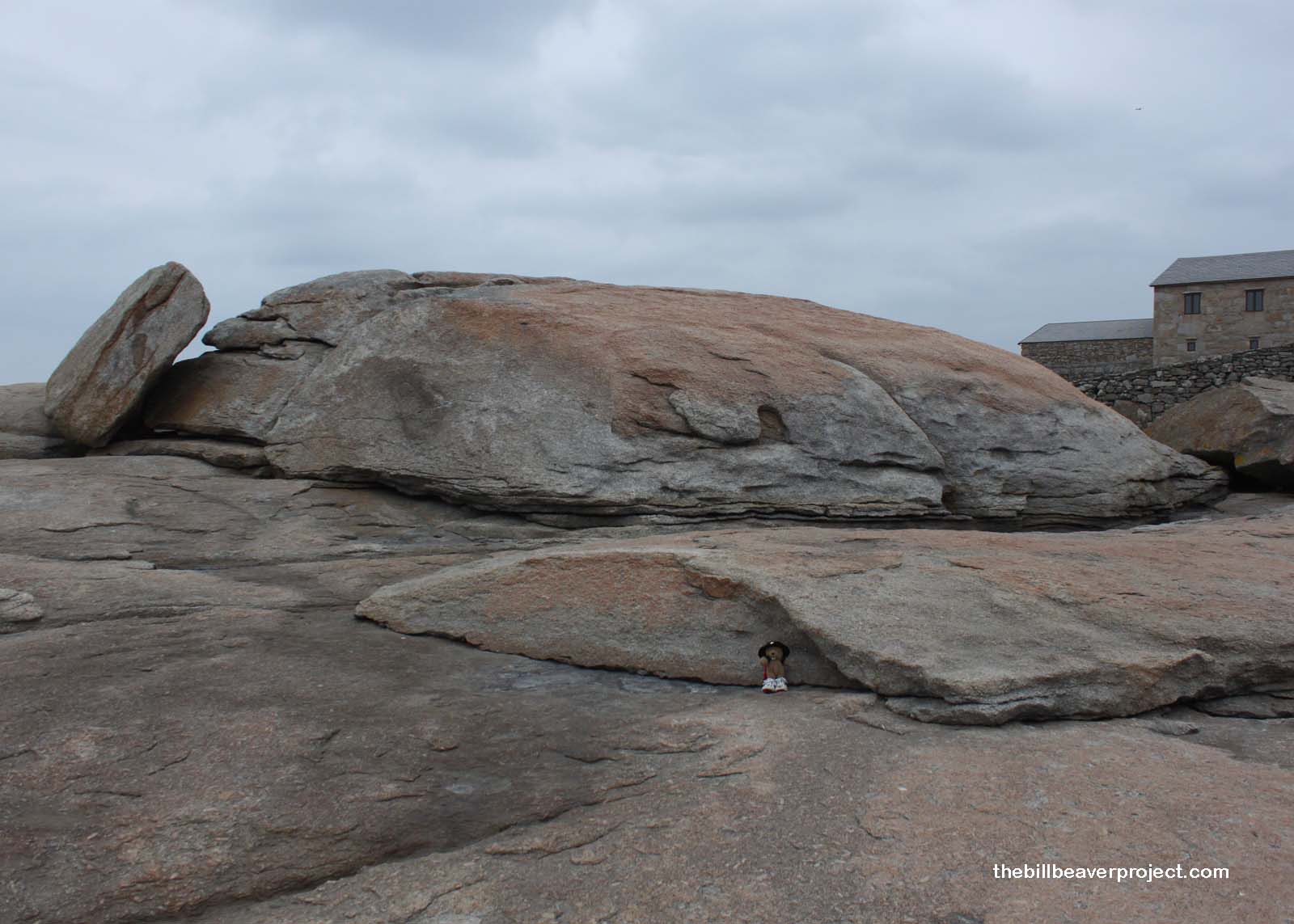 |
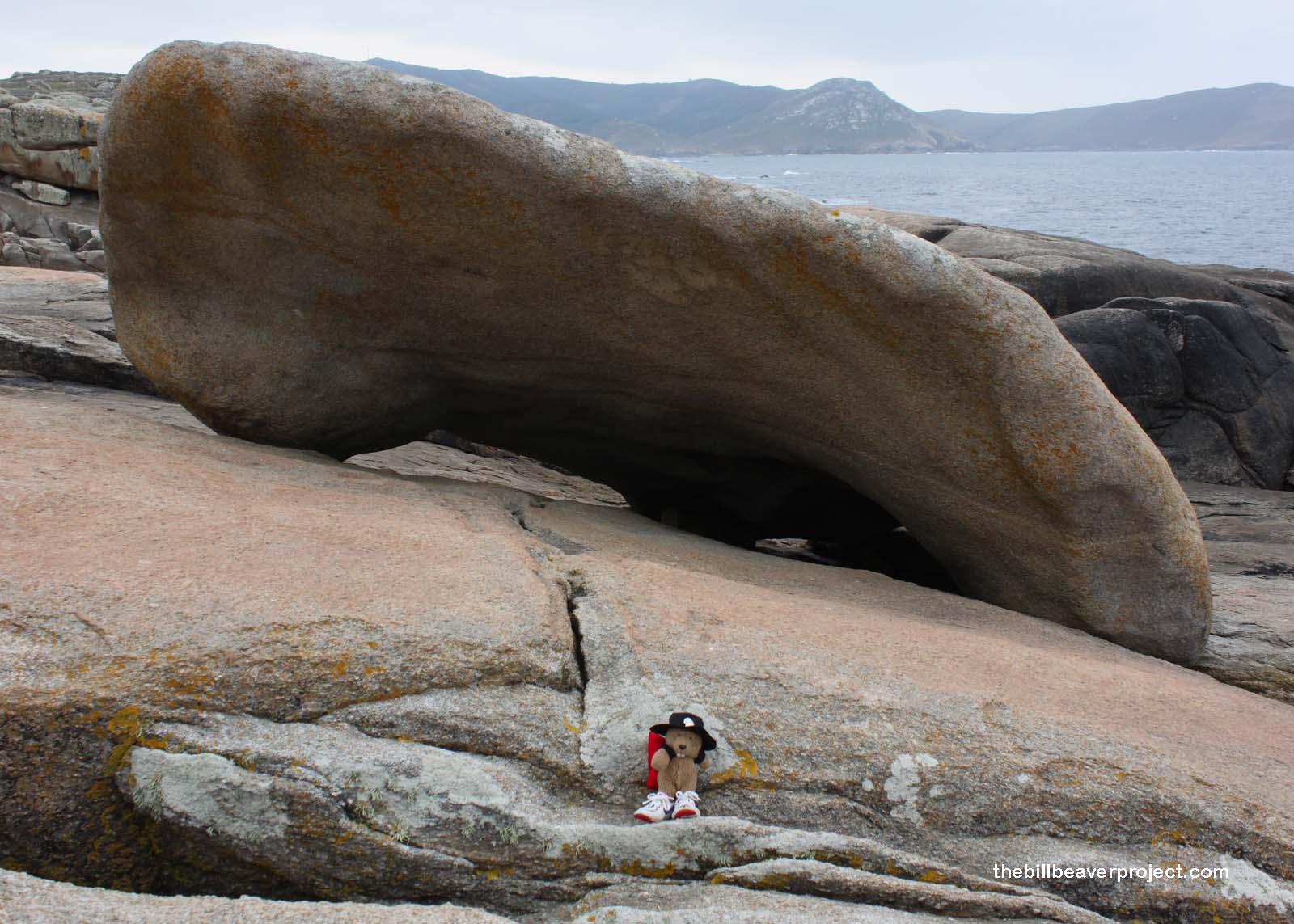 |
| Pedra dos Namorados (Hull) |
Pedra dos Cadrís (Rudder) |
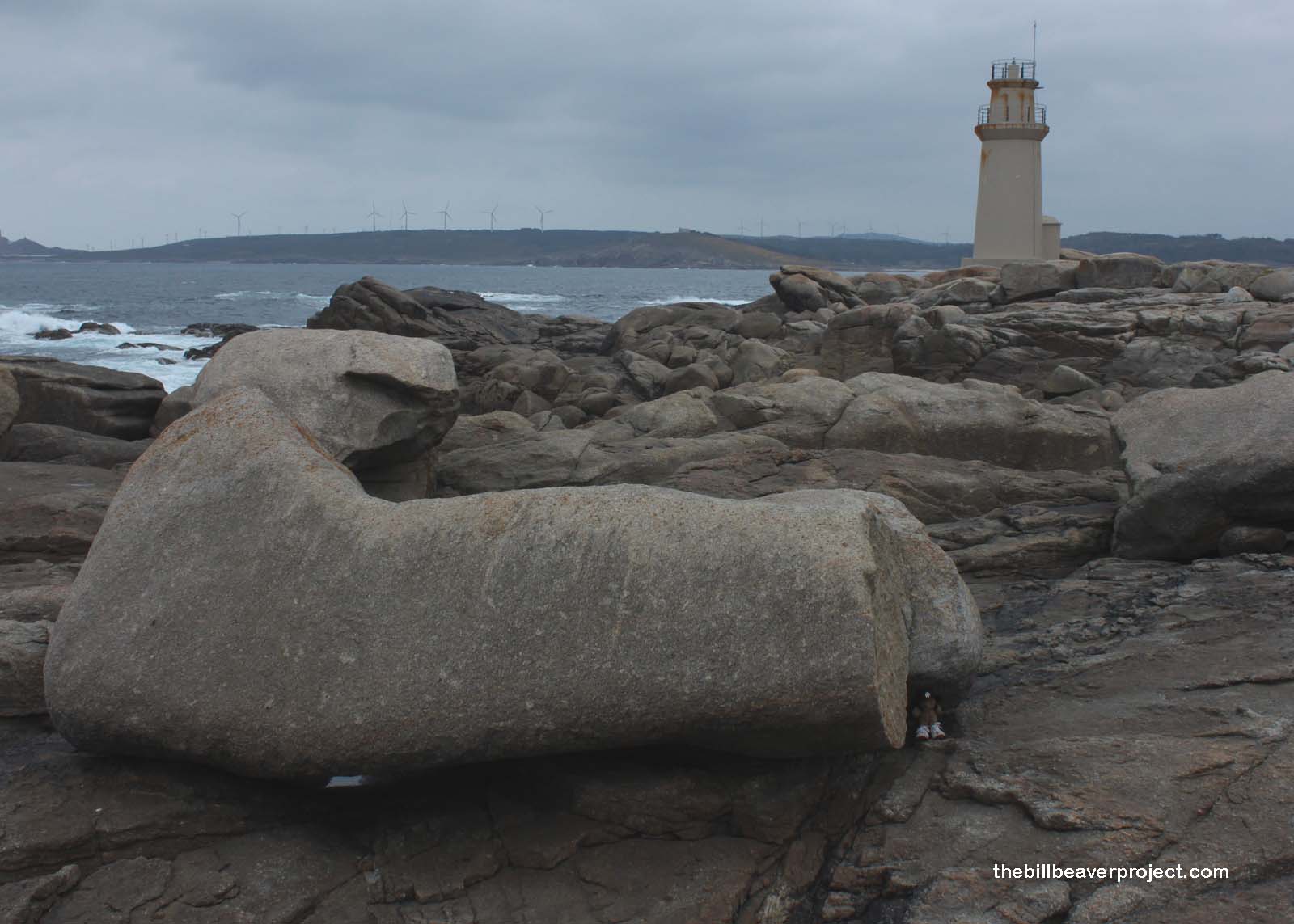 |
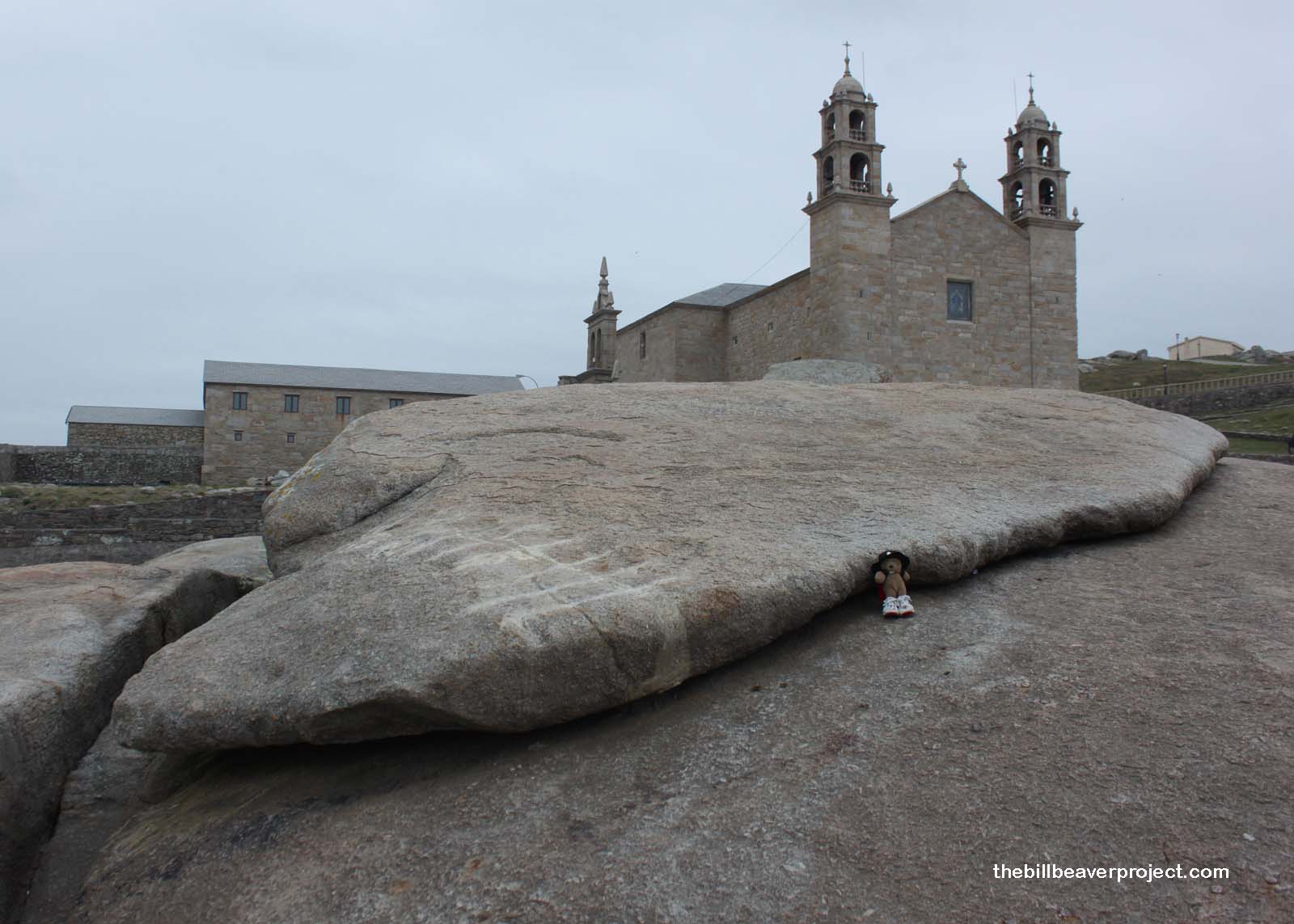 |
| Pedra de Temón (Mast) |
Pedra de Abalar (Sail) |
Just to be clear, these are my interpretations of the stones’ maritime functions. There are lots of other interpretations, most of which don’t even include the Pedra dos Namorados, which was mainly a place where couples would pledge their love for each other. Nonetheless, these stones are really magnificent in person! Though the Pedra dos Cadrís is now more emblematic and reputed to cure back problems for anyone who crawls under it 9 times (did it!), it’s the Pedra de Abalar that has the most cultural significance.
Before a storm cracked it in 1978 (see the repairs in the photo?), the Pedra de Abalar used to balance and move with the wind much more precariously. Ancient Celtic tribes used to divine the innocence or guilt of criminal suspects by the angle at which the Pedra balanced! This practice was common with similar rocking stones across the world, especially in the modern UK! One legend says the Pedra even thwarted some thieves breaking into the Sanctuary by thumping hard enough upon the ground that it woke the rest of the neighbors and scared the thieves away!
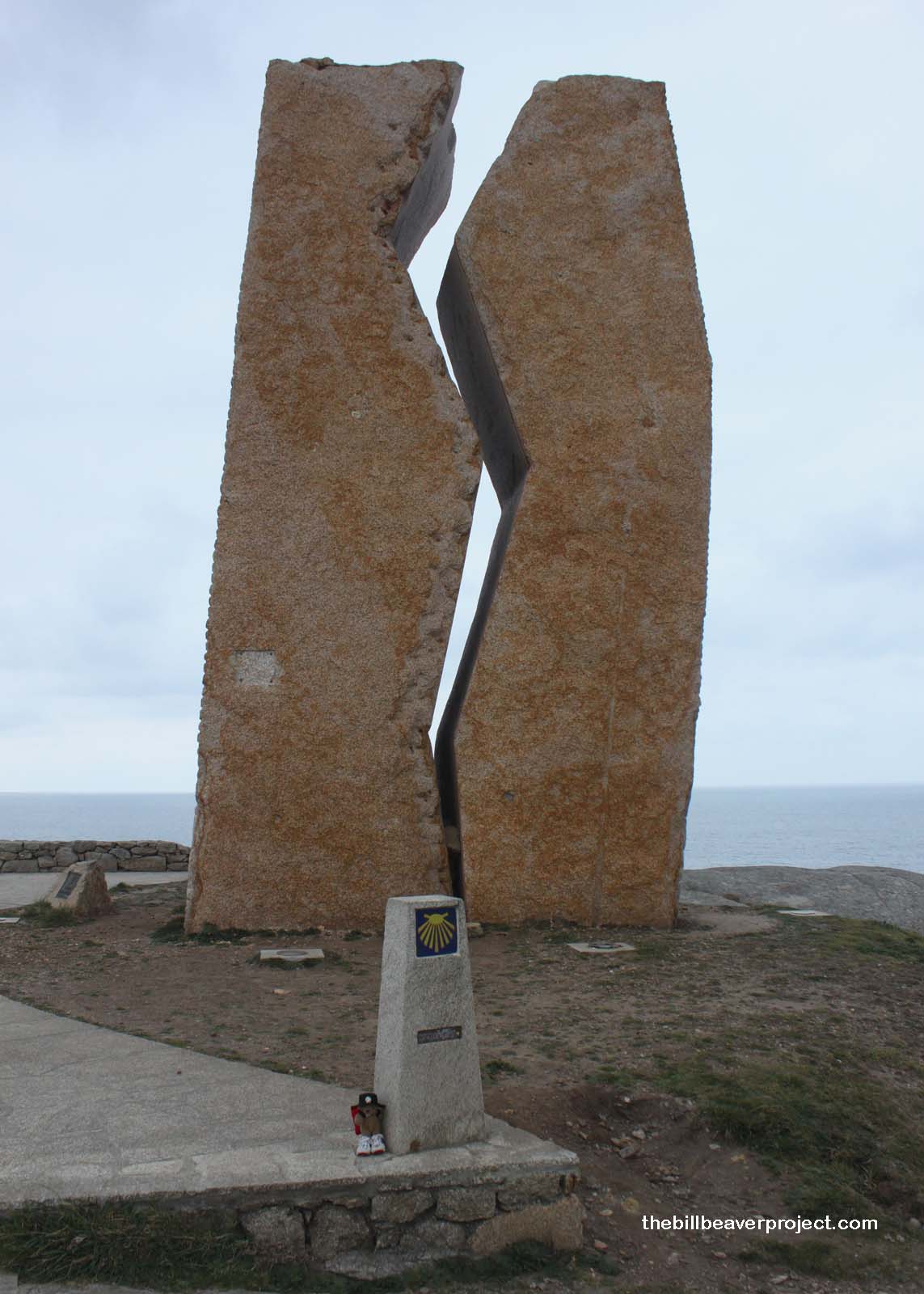 |
From the beach of the nautical miracle, I walked up the slopes of Monte Corpiño, where there stands a monument commemorating the Prestige oil spill, the worst environmental disaster in Spain’s history! On November 13th, 2002, the tanker Prestige dumped over 69,000 tons (short, not metric) of oil off the Galician coast before it was towed out to sea, where it split in two and sank. The hope was that the remaining 15,000 tons of oil would freeze in the depths. This was terrible for the fisherfolk along the coast, as I’m sure the folks in the Gulf of Mexico can attest! When your livelihood depends on catching and eating fish, what do you do when the fish either die or become toxic?
Experts estimated that it could take up to ten years for the contamination to stop affecting the marine life of Galicia! As it’s only a few months shy of the decade mark, I hope everything’s been cleared up! I like my octopus in olive oil, not crude! Shh…
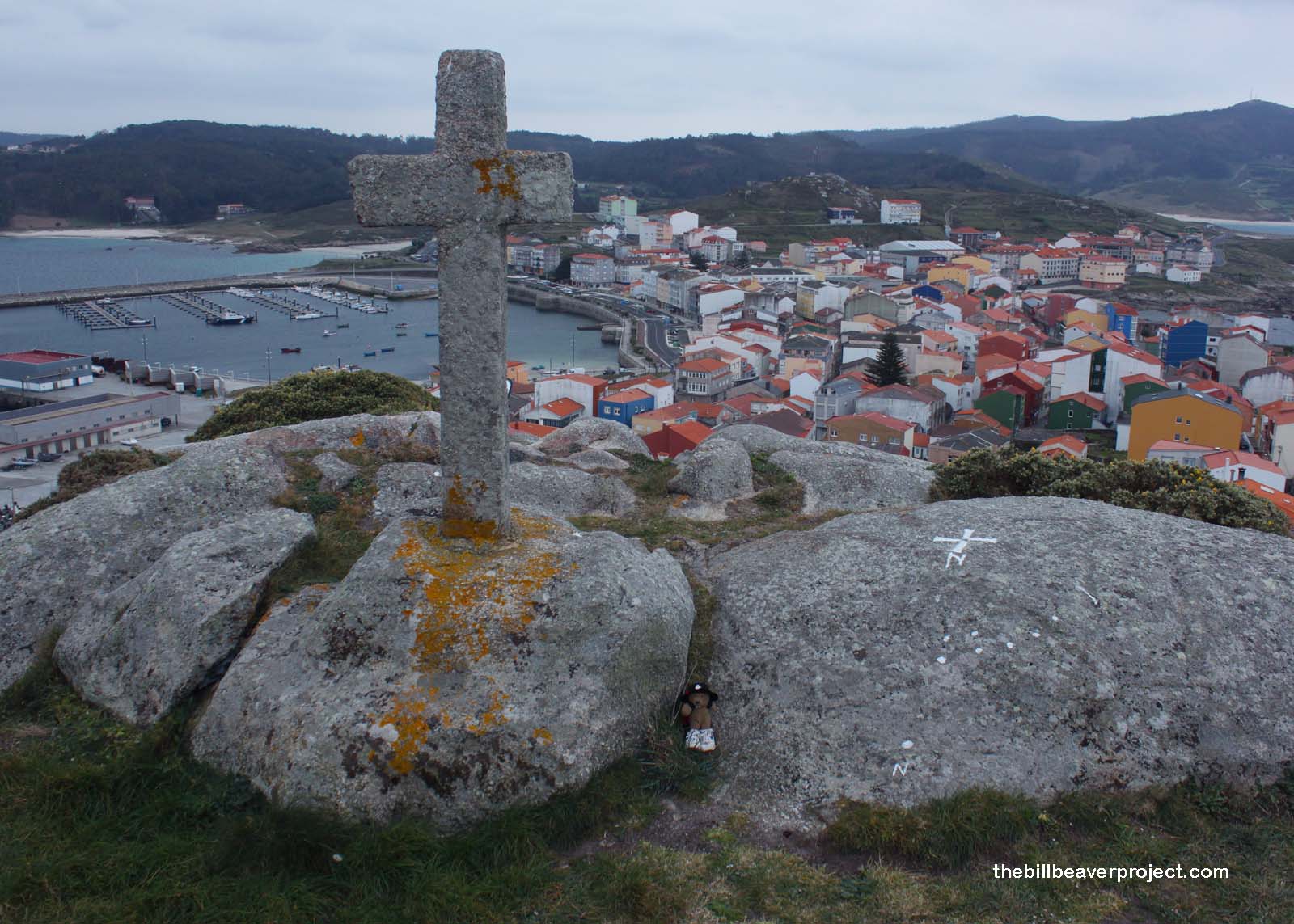 |
On that note, I was getting kind of hungry, and I hadn’t really taken a break in a long while. So, I checked into my last albergue (hard to believe!) and went in search of food. The owner of the solo curio shop recommended the place next door, the Restaurante a de Lolo. There, I could tell that the fishing industry would be just fine. I ordered the bacalao, the hostess carried the bacalao from the boat to the kitchen, and in twenty minutes, voilá! I had the freshest, most delicious bacalao with mixed vegetables this side of the ocean’s surface!
Though I wish I could have sat and enjoyed the food and ambiance more, the albergue closed early, so I had to hustle back through the chilly alleys and up a particularly steep hill to reach the albergue, where I encountered all the people who had been absent from the route this morning. They had done the triangle the other way: Olveiroa to Finisterre and then to Muxía. I’m glad I took today’s detour, though. Sometimes it’s good to let the school swim the other way!
I forgot to mention that the hospitalero had given me a second compostela when I first checked in, since the local Pilgrim’s Office was closed. They were just sitting there, waiting to be picked up! The certificate was neat, and in Galego, rather than Latin, but after all of today’s neat discoveries, the certificate just seemed like an afterthought. Nonetheless, the hospitalero told me that, if I wanted a complete set of three, I had to stop in Lires tomorrow and get my credencial stamped. Well… why not?
Buen Camino!

P.S. I learned a valuable lesson today at the beach! When you want to take a picture of a rock, but someone is standing on that rock, enjoy the rest of the scenery until they move! There’s too much to enjoy to get wrapped up in one blocked view!
 Previous Day |
Total Distance Walked: 836.3 km (513.5 mi) |
 Next Day |
